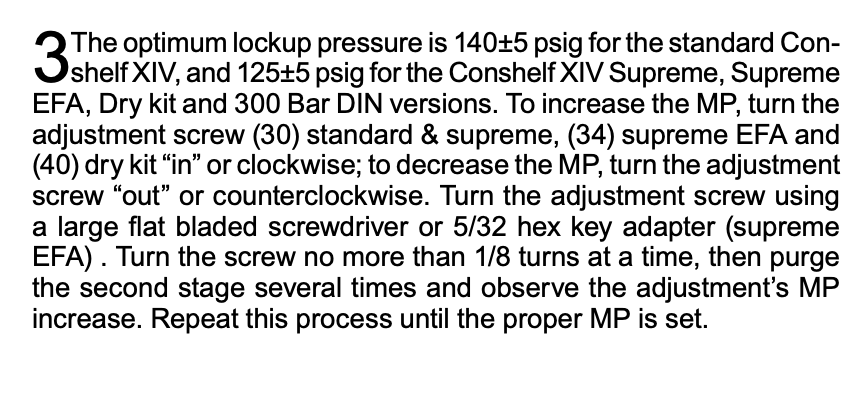I wonder when all of that became en vogue, since my crazier ice diving days, began in the early 1980s, and no mention of lowering an IP for cold water was ever offered by anyone.
In fact, most of us routinely used regulators with IPs which ranged from 10 -12.5 bar, without any icing issues . . .
The less the delta between ambient and Interstage pressure the less the adibatic cooling. It is just physics. And yes the delta is greatest at the surface where icing is often encountered.
Here is from the Conshelf manual, the Supreme (sealed and intended for cooler water diving) has a lesser IP as an example:

I do not know how universal the admonition is from other manufactuers to lower the IP for cold water usage but there it is from AL.



